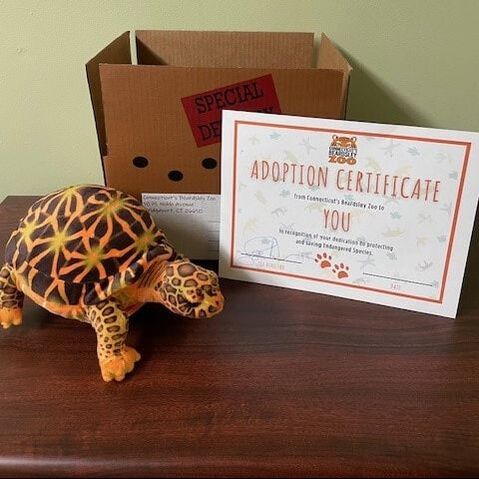Three-Toed Box Turtle

Common Name: Three-Toed Box Turtle
Scientific Name: Terrapene carolina triunguis
Physical Description: The Three-Toed Box Turtle is the smallest of the Eastern Box Turtle subspecies, growing up to only 2 pounds and 6 inches in length. It has 3 toes on each hind foot, giving it its characteristic name! The Three-Toed Box Turtle tends to be brown, gray in color, with the occasional inclusion of reds or oranges within its colors. They also have scaled legs and a hinged plastron which allows them to close their shell for protection.
Habitat: The Three-Toed Box Turtle lives near bodies of water in wetlands, grasses, and woodlands. They require access to warm sunlight and rocks to bask to maintain homeostasis, and temperature also plays a role in sex determination of their offspring.
Range: They live in the south-central United States of America1.
Diet: Three-Toed Box Turtles eat insects, plants, seeds, and small vertebrates.
Life Span: They live 30 to 50 years1.
Social Structure: They are solitary animals that provide no parental care. They live in a habitat roughly the size of an American football field.
Status: Vulnerable2
Other: Tip from the Zoo: Don’t move turtles you find in the wild. They live in small ranges and moving them could take them from their habitat.
1 https://www.marylandzoo.org/animal/three-toed-box-turtle/
2https://www.iucnredlist.org/species/21641/97428179
Scientific Name: Terrapene carolina triunguis
Physical Description: The Three-Toed Box Turtle is the smallest of the Eastern Box Turtle subspecies, growing up to only 2 pounds and 6 inches in length. It has 3 toes on each hind foot, giving it its characteristic name! The Three-Toed Box Turtle tends to be brown, gray in color, with the occasional inclusion of reds or oranges within its colors. They also have scaled legs and a hinged plastron which allows them to close their shell for protection.
Habitat: The Three-Toed Box Turtle lives near bodies of water in wetlands, grasses, and woodlands. They require access to warm sunlight and rocks to bask to maintain homeostasis, and temperature also plays a role in sex determination of their offspring.
Range: They live in the south-central United States of America1.
Diet: Three-Toed Box Turtles eat insects, plants, seeds, and small vertebrates.
Life Span: They live 30 to 50 years1.
Social Structure: They are solitary animals that provide no parental care. They live in a habitat roughly the size of an American football field.
Status: Vulnerable2
Other: Tip from the Zoo: Don’t move turtles you find in the wild. They live in small ranges and moving them could take them from their habitat.
1 https://www.marylandzoo.org/animal/three-toed-box-turtle/
2https://www.iucnredlist.org/species/21641/97428179






